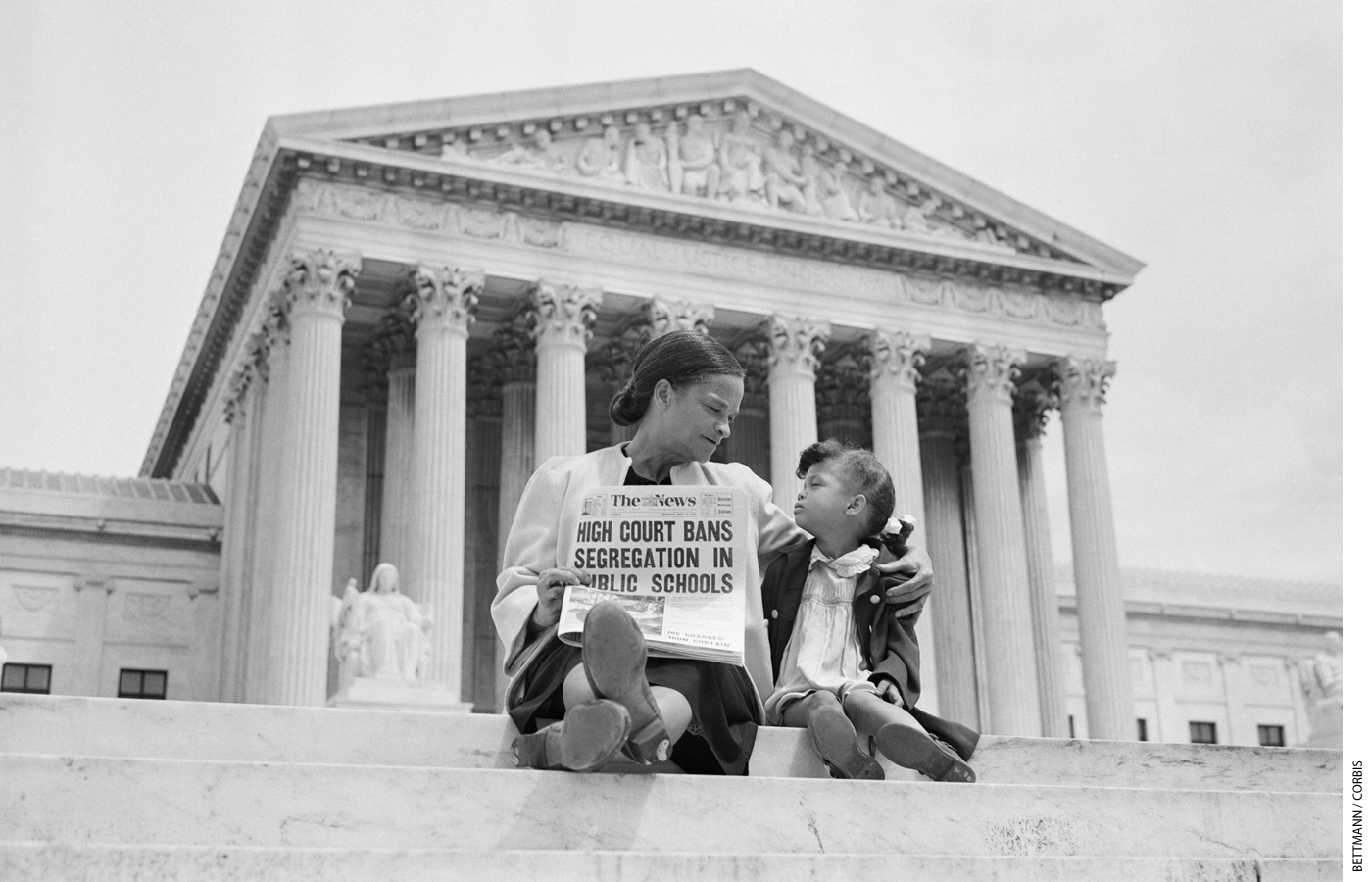
May 17 marks the 70th anniversary of the U.S. Supreme Court’s landmark school desegregation decision in Brown v. Board of Education. There is ample reason to celebrate Brown: not only did it mark the beginning of the end of the racial caste system in the South, but also it reinvigorated the Equal Protection Clause of the Fourteenth Amendment. Its implications reach far beyond race and education, as important as those matters remain.
At the same time, it is remarkable how many of the legal and policy questions raised by Brown remain unresolved. Consider some of the issues many school systems now confront:
- To what extent can school districts take students’ race into account in order to produce diverse schools and classrooms? In recent years the Supreme Court has limited the use of race-based assignments but has also allowed ample wiggle room.
- To what extent can school districts change the admissions requirements of exam schools to increase the number of Black and Hispanic students if the readily predictable result (and perhaps a secondary purpose) is to reduce the number of Asian American students?
- A number of public schools offer voluntary “affinity” groups or courses limited to Black students and led by Black teachers. Does this practice violate federal law?
These questions remain the subject of intense debate and litigation seven decades after Brown because the Supreme Court has never spelled out exactly why segregation violates the U.S. Constitution, what “desegregation” means, and what schools must do to comply with Brown’s mandate. Chief Justice Earl Warren’s constitutional argument in Brown was perfunctory, resting more on flawed social science evidence than on a convincing interpretation of the Fourteenth Amendment. Neither in his 1954 opinion nor in his brief follow-up opinion in Brown II the next year did Warren specify what schools had to do to comply. One tragic consequence of this silence was that virtually no desegregation occurred in the South for a decade and a half. Just as important, when the Supreme Court did start to issue rulings on desegregation in the late 1960s, its opinions were ambiguous, contradictory, and meandering. For decades, the high court left lower federal courts and school officials without clear guidance on how to proceed.

As I explain in my 2023 book, The Crucible of Desegregation, the justices have oscillated between two interpretations that I label the “colorblind/limited intervention” approach and the “racial isolation/equal opportunity” approach. The first establishes a relatively clear legal rule: in all but the most extraordinary circumstances, government cannot use race to classify or categorize its citizens. The central goal is to take a particularly pernicious weapon out of the hands of government officials. Prohibiting the use of racial classifications struck at the heart of the racial caste system in the South without requiring courts to get deeply involved in education questions—thus the “limited intervention” half of the label.
According to the alternative interpretation, Brown held out the broader promise of equal educational opportunity. Providing equal opportunity to minority students requires not just ending legal segregation but also eliminating “racial isolation,” whatever its cause. Indeed, federal judges bear responsibility for examining all features of public education to ensure schools provide adequate instruction and fair treatment to minority students.
Supporters of both interpretations can find language in Brown to support their claims. Each approach has an Achilles’ heel: the former is too easy to evade; the latter too difficult to put into effect. Not until 2007, in Parents Involved in Community Schools v. Seattle School District No. 1, did the high court spell out these competing positions, and even then, neither received support from a majority of the justices.
What Brown Didn’t Say
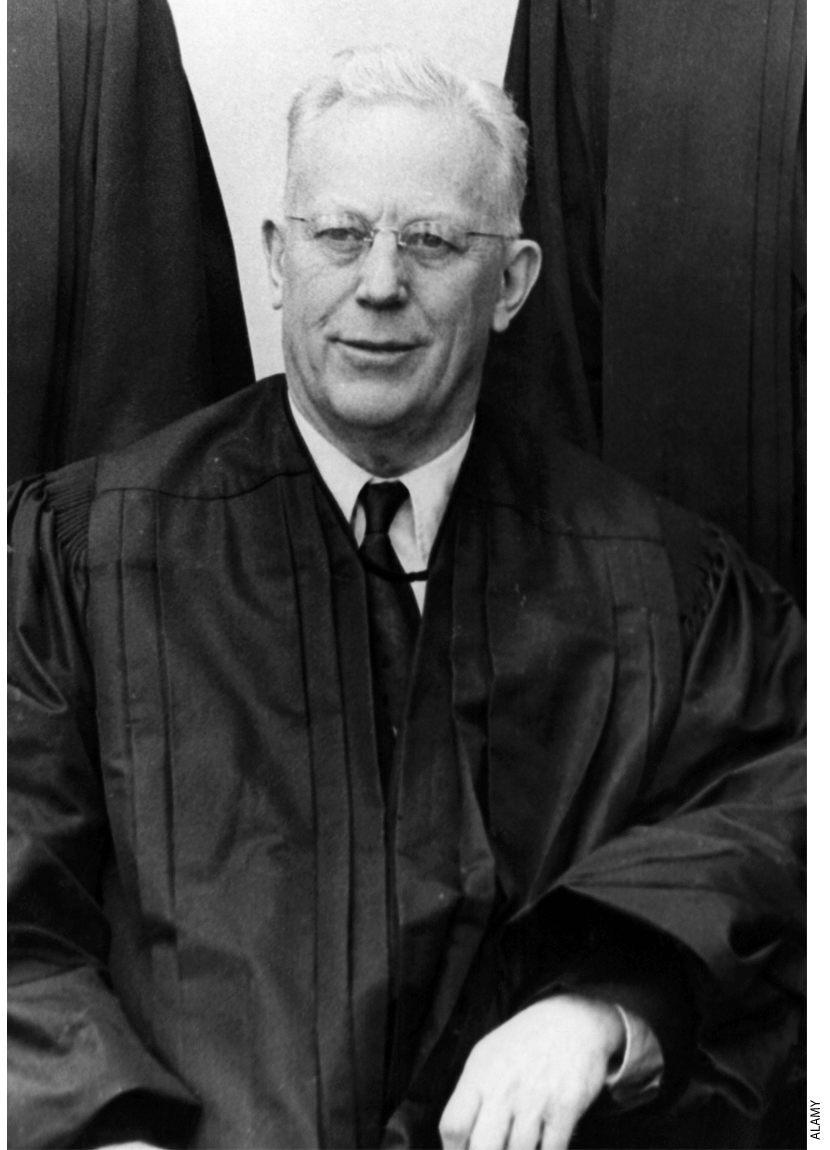
Writing for the Supreme Court in 1954, Warren was chiefly concerned with maintaining the court’s tenuous unanimity (which was seriously in doubt in the months leading up to the desegregation decisions), writing an opinion simple enough to appeal to the average citizen, and striking a tone that might ease the South into compliance. Although the court would soon strike down every form of state-sponsored segregation, Warren was understandably reluctant to announce such a controversial break with precedent in 1954. Therefore, he did not invoke the famous words of Justice John Marshall Harlan’s dissenting opinion in Plessy v. Ferguson: “Our Constitution is color-blind, and neither knows nor tolerates classes among citizens.” But in Bolling v. Sharpe, the companion case to Brown that struck down school segregation in the District of Columbia, Warren seemed to endorse this understanding: “Classifications based solely upon race must be scrutinized with particular care, since they are contrary to our traditions, and hence constitutionally suspect.” And Brown II required school districts “to achieve a system of determining admission to the public schools on a nonracial basis” (emphasis added here and below).
In Brown I, though, Warren hedged, writing, “In the field of public education the doctrine of ‘separate but equal’ has no place.” He looked “instead to the effect of segregation itself on public education.” Segregation retards “the educational and mental development of negro children” and “deprive[s] them of some of the benefits they would receive in a racial[ly] integrated school system.” When a state undertakes to provide public education, it becomes “a right which must be made available to all on equal terms.” Thus, on top of Brown’s apparent ban on racial classifications was layered a vague commitment to “equal opportunity,” to be judged in part by the effect of education practices on minority children.
In 1954–55, the court gave no indication of just what school districts had to do to comply with the ruling. Warren’s even shorter opinion in Brown II merely told school officials to desegregate “with all deliberate speed.” The standard established by the court for evaluating schools’ desegregation efforts was as vague as the schedule for achieving it was amorphous.
Colorblindness, Then and Now
In the 1950s, state-mandated separation of the races was viewed by almost all advocates of desegregation as the central problem, and prohibition of racial classifications as the obvious solution. This was definitely true of Thurgood Marshall and the other NAACP leaders who had long dedicated themselves to the cause. Their initial brief insisted that “The Fourteenth Amendment precludes a state from imposing distinctions or classifications based upon race or color alone.” In oral argument, the NAACP’s Robert Carter explained that the “one fundamental contention which we will seek to develop” is that “no State has any authority under the equal-protection clause of the Fourteenth Amendment to use race as a factor in affording educational opportunity among its citizens.”
Members of the court and the NAACP litigation team recognized they would face intense opposition in the South, but they assumed the desegregation process itself would be relatively straightforward. Heading up the team, Thurgood Marshall assured the court that “the only thing that we are asking for is that the state-imposed racial segregation be taken off,” leaving local officials “to work out their solutions of the problem to assign children on any reasonable basis they want to assign them on.” That, he suggested, could be achieved in the summer. Almost everyone envisioned a return to neighborhood schools in the South—after decades of busing students past the nearest school to attend a segregated one. In the border states, de jure segregation did quickly disappear.
But in the Deep South the court’s decision was greeted with the “massive resistance” U.S. Senator Harry Flood Byrd of Virginia called for in 1954. Within two years, Byrd had amassed a coalition of nearly 100 southern politicians committed to blocking Brown’s implementation. By the late 1950s and early 1960s, southern school districts were using “freedom of choice” plans to avoid anything more than token desegregation. Almost all federal judges conceded that these plans were constitutional as long as the choices students and their parents made were in fact free, and not tainted by the presumption that students would attend their previously segregated schools. But in most cases, “freedom of choice” was little more than a transparent fraud, corrupted both by administrative manipulation and by informal intimidation. This created a major practical challenge to those who supported a colorblind interpretation of Brown.
By the second half of the 1960s, the Civil Rights Act was the law of the land, yet virtually no Black students were going to school with white students in the Deep South. Federal judges on the Fifth Circuit Court of Appeals decided that time for stalling had finally run out. Working with the Department of Health, Education, and Welfare (HEW), they demanded data to prove that formerly segregated districts had taken “affirmative action” to achieve “the conversion of a de jure segregated dual system into a unitary, nonracial (nondiscriminatory) system—lock, stock, and barrel: students, faculty, staff, facilities, programs, and activities.” Initially, the demands of the Fifth Circuit and HEW were relatively mild: nearly two decades after Brown, they required only 10 to 20 percent of Black children be enrolled in formerly all-white schools. Without such a numerical standard, it is doubtful any significant change in school enrollments would ever have been achieved. But a Rubicon had been crossed. Now racial classifications were being used to promote desegregation, not enforce segregation.
Was the use of racial assignments a temporary measure designed to wring stigmatizing racial identification out of school districts guilty of unconstitutional segregation, or was it an appropriate—even constitutionally mandated—measure for achieving racial balance in perpetuity in the North and West as well as the South? If the Supreme Court seemed to suggest the latter in the 1970s, by the 1990s it had begun to suggest the former.
Several of the justices appointed by Presidents Reagan and Bush reintroduced the colorblind interpretation of the Fourteenth Amendment that the NAACP had previously favored but long since abandoned. In 1995 Justice Clarence Thomas wrote that the “simple, yet fundamental, truth” announced in Brown is “the principle that the government must treat citizens as individuals, and not as members of racial, ethnic, or religious groups.” According to Justice Anthony M. Kennedy, “Reduction of an individual to an assigned racial identity for differential treatment is among the most pernicious actions our government can undertake.” Justice Sandra Day O’Connor argued that the use of so-called “benign racial classifications” implies “confidence in [courts’] ability to distinguish good from harmful governmental uses of racial criteria. History should teach greater humility.” According to Chief Justice John G. Roberts, “It is a sordid business, this divvying us up by race.”
In the 2007 Seattle case, the high court sharply limited school districts’ ability to use race-based student assignments to achieve what by then was widely known as “diversity” rather than “racial balance.” Four members of the court adopted a colorblind interpretation of the 14th Amendment, but the pivotal fifth vote was cast by Kennedy, who, in his concurring opinion, offered schools significantly more flexibility in using race-based assignment. The court’s 2023 decision in the Harvard affirmative action case suggests that it is inclined to further restrict school districts’ authority. But given how long the court has gone without issuing desegregation opinions, we should not expect a definitive decision soon.
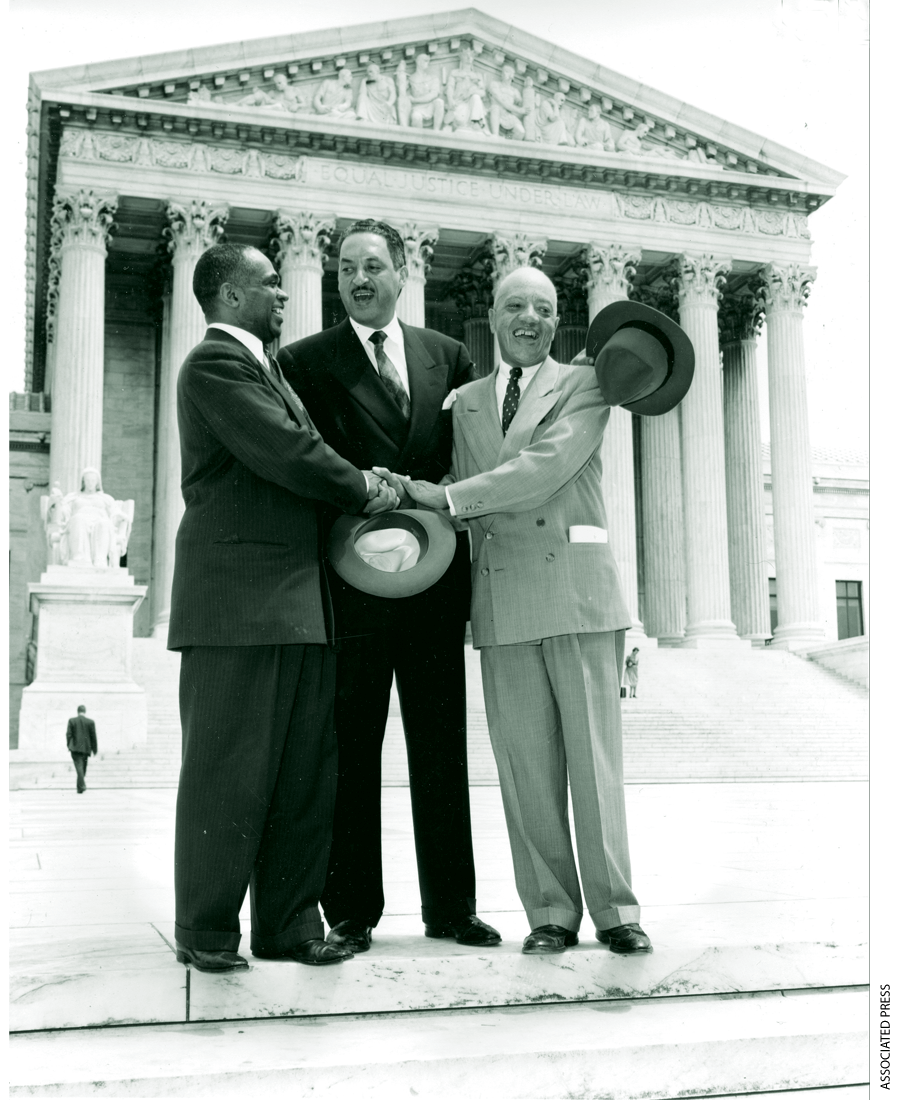
From Racial Segregation to Racial Isolation
Soon after the Fifth Circuit and HEW used numerical targets to jumpstart what UCLA professor Gary Orfield has aptly described as the “reconstruction of southern education,” the Supreme Court finally broke its silence and handed down the first of a flurry of desegregation decisions. In 1968, a unanimous court announced that each school board in formerly segregated districts must “come forward with a plan that promises realistically to work, and promises realistically to work now” (emphasis in original). The demand for immediate action was certainly in order. But what does it mean “to work”? School districts, Justice William J. Brennan explained, have an “affirmative duty” to “convert to a unitary school system in which racial discrimination will be eliminated root and branch.” What, then, is a “unitary school system”? Apparently, one that entirely eliminates the “racial identification” of previously segregated schools. In Brennan’s felicitous phrase, school boards must “fashion steps which promise realistically to convert to a system without ‘white’ schools and ‘Negro’ schools, but just schools.”
Trying to guess what the justices meant, the lower courts held that for a formerly “dual” school system to eliminate “racially identifiable” schools, the racial composition of the student body in each school in the district must approximate that of the district’s overall student population. In other words, white and Black students must be distributed proportionally among all the district’s schools.
Was this a judicial remedy designed to undo the effects of decades of segregation and noncompliance? Or was it a constitutional requirement for all schools, whether or not they had engaged in intentional racial discrimination? On this crucial matter the Supreme Court remained noncommittal. But lower courts repeatedly asserted that racial imbalance by itself reduces the educational opportunities of minority students and is therefore unconstitutional.
This understanding was first enunciated in a 1967 report of the U.S. Commission on Civil Rights entitled Racial Isolation in the Public Schools. Its conclusion summarized what soon became the conventional wisdom. The “central truth” announced in the report was that:
Negro children suffer serious harm when their education takes place in public schools which are racially segregated, whatever the source of such segregation may be. Negro children who attend predominantly Negro schools do not achieve as well as other children, Negro and white. Their aspirations are more restricted than those of other children and they do not have as much confidence that they can influence their own futures. When they become adults, they are less likely to participate in the mainstream of American society, and more likely to fear, dislike, and avoid white Americans.
The commission recommended that Congress enact legislation specifying that in no public school should minority enrollment exceed 50 percent.
This “central truth” was conveyed to federal judges by a cadre of expert witnesses who testified in the trial phase of desegregation cases. For example, during the first round of litigation in Keyes v. School District No. 1, Denver, Judge William Doyle stated, “We cannot ignore the overwhelming evidence to the effect that isolation or segregation per se is a substantial factor in producing unequal educational outcomes.” Consequently, “we must conclude that segregation, regardless of its cause, is a major factor in producing inferior schools and unequal educational opportunity.” Reflecting on the testimony he had heard about the harm done by racial isolation, the trial judge in the Detroit case found it “unfortunate that we cannot deal with public school segregation on a no-fault basis, for if racial segregation in our public schools is an evil, then it should make no difference whether we classify it as de jure or de facto.” The court’s goal was simply “to remedy a condition which we believe needs correction.”
Behind this “racial isolation” argument lay two assumptions: that Brown promised not just the elimination of racial discrimination, but a broader “equal educational opportunity,” and that changing the racial composition of schools would substantially improve educational opportunities for minority students. For example, the district court judge who ordered the desegregation of San Francisco’s schools in 1970 cited the Coleman Report and the Civil Rights Commission’s study to conclude that “Black students in identifiably black schools do not perform as well as they would perform in an integrated school. . . . While integration of schools would improve the academic performance of black children, it would have little or no adverse effect on the academic performance of white children.” Similarly, the judge in the Charlotte, North Carolina case confidently asserted that “the experts all agree” not only that “a racial mix in which black students heavily predominate tends to retard the progress of the whole group” but also that “if students are mingled with a clear white majority such as a 70/30 ratio . . . the better students can hold their pace, with substantial improvement for the poorer students.” Over three decades later, Justice Stephen G. Breyer claimed that social science research indicates “that black children from segregated educational environments significantly increase their achievement levels once they are placed in a more integrated setting.”
Especially in the North, where school districts are much smaller than in the South, coming close to a 70/30 ratio proved nearly impossible. The long-term trend of suburbanization coupled with the white flight that often accompanied desegregation orders meant that ending “racial isolation” would require massive inter-district busing. This proved extraordinarily unpopular. Endorsing such measures would have required the Supreme Court both to explicitly acknowledge the “racial isolation” rationale and to endure a major political backlash—including a possible constitutional amendment prohibiting busing to achieve racial balance. In 1974 it temporarily backed away from the “racial isolation” argument, insisting that judges could impose cross-district busing only if there was evidence that the state government or the affected suburbs had engaged in discriminatory behavior.
Over the past half century, demographic change has made eliminating “racial isolation” even harder. Today, fewer than half of all public school students are non-Hispanic white. Over the next decade, the proportion of Anglos in public schools is expected to decline to 45 percent, while the share of Hispanics grows to 29 percent. In the West, Hispanics already outnumber Anglos 42 percent to 38 percent. During the first decade of the 21st century, the student bodies of the 20 largest school systems in the country were, on average, 20 percent Anglo, 38 percent Hispanic, 32 percent African American, and 9 percent Asian. In 2017 the percentage of white students was 7 percent in Los Angeles and Miami-Dade County; 5 percent in Dallas; 8 percent in Houston; 2 percent in Detroit; 12 percent in Chicago; 14 percent in San Francisco and Philadelphia; 15 percent in Boston; and 16 percent in New York City. Further complicating these calculations is the fact that a growing share of students—today about 6 percent—label themselves “interracial.” In the 1960s and 1970s, the implicit goal of desegregation plans was to make virtually all schools majority white. But today that is out of the question in many parts of the country.
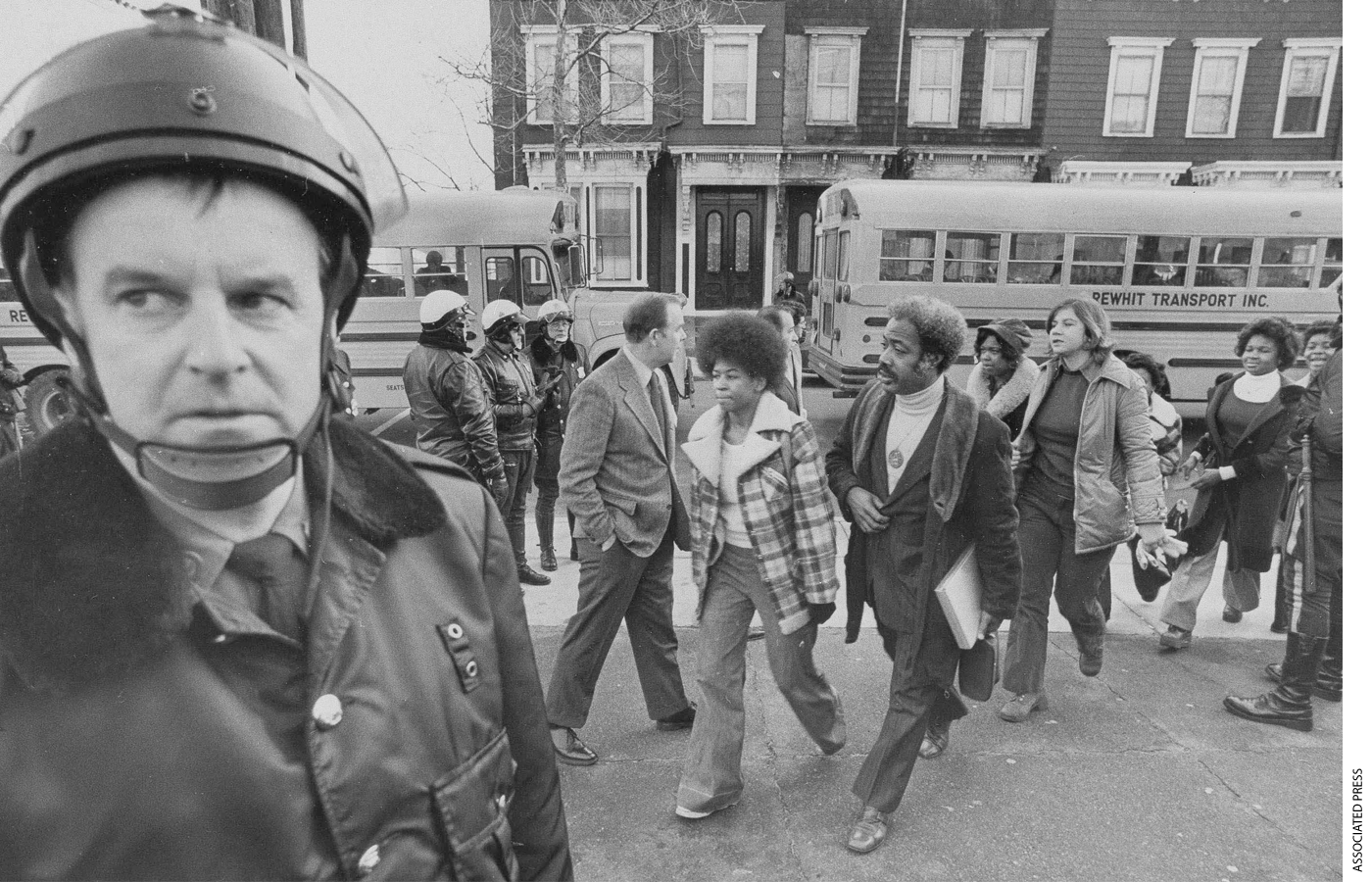
From Racial Balance to Education Quality
Recognizing the futility of trying to end “racial isolation,” many judges refocused on other techniques for improving educational opportunity. For example, Judge Arthur Garrity concluded that Boston’s entire public school system was inadequate. He rejected the NAACP’s proposed plan because it failed to address the system’s many flaws. The special master he appointed to formulate a remedial plan asked, “What the hell is the point in desegregation if there are no good schools?” During the remedial phase of litigation in Reed vs. Rhodes, the Cleveland case, Judge Frank Battisti became alarmed at the “inferior education being meted out to those who were the victims of discrimination.” He devised remedies to address “educational testing, reading programs, counseling, extracurricular activities, and relations with universities, businesses and cultural institutions.” In 1977 the Supreme Court upheld an order requiring Detroit to establish new magnet and vocational schools as well as “in-service training for teachers and administrators, guidance and counseling programs, and revised testing procedures.” Such reforms, the court claimed, would “restore the victims of discriminatory conduct to the position they would have enjoyed” had public officials not acted unconstitutionally.
The most extensive effort to improve the quality of education in schools deemed “dual” by federal judges came in Kansas City, Missouri. Judge Russell Clark explained that the “long term goal of this court’s remedial order is to make available to all [Kansas City] students educational opportunity equal to or greater than those available” to the average student in suburban schools. To accomplish this, Clark overhauled the entire school system, turning each city high school into a magnet school with a special theme, ranging from science and math to classic Greek and agribusiness. By 1995 Kansas City was spending more than any comparable school system in the country. The cost of these court-ordered reforms was about $2 billion, most of which came from the state of Missouri and the rest from tax increases mandated by the court. Unfortunately, as Joshua Dunn shows in Complex Justice: The Case of Missouri v. Jenkins, the court’s plan never came close to working. Both the number of white students in city schools and the test scores of Kansas City students continued to decline. Eventually, Black parents revolted against the court’s plan, reinstituting more traditional neighborhood schools.
By the late 1970s, preliminary evidence from school districts undergoing desegregation had begun to trickle in. Reviews of these studies, including a major assessment conducted by the National Institute of Education (NIE), found small improvements in reading by Black students in districts undergoing desegregation, but no change in mathematics. The director of the NIE project found “the variability in effect sizes more striking and less well understood than any measure of central tendencies”—not surprising, given the wide variety of desegregation plans. Thirty years later Stanford professor Sean Reardon and his co-authors wrote, “It remains unclear if, and to what extent, school racial segregation affects student achievement.”
EdNext in your inbox
Sign up for the EdNext Weekly newsletter, and stay up to date with the Daily Digest, delivered straight to your inbox.
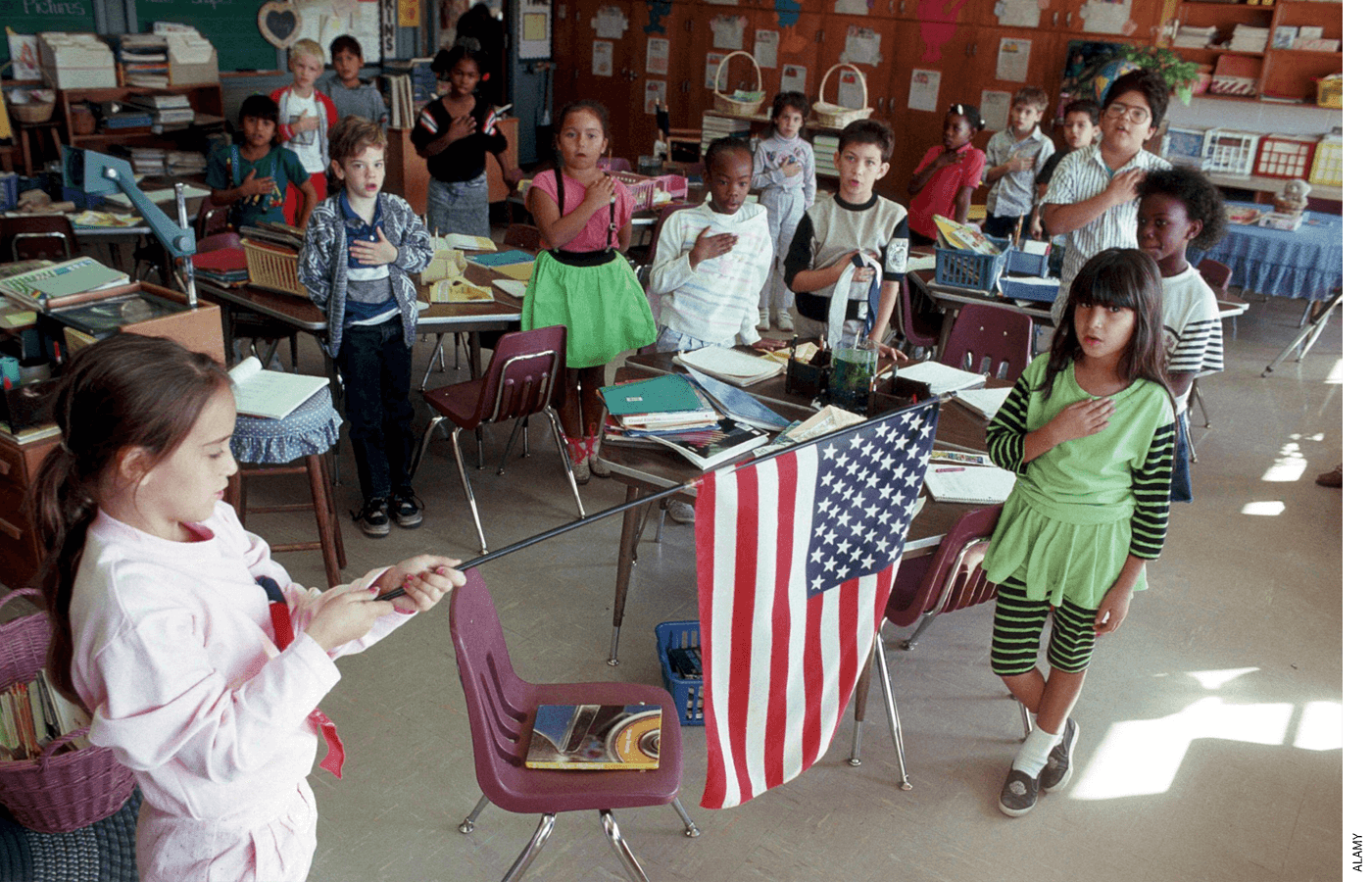
What Works?
Over 50 years ago the Supreme Court demanded that school districts that had engaged in unconstitutional discrimination “come forward with a plan that promises realistically to work.” But it never explained what it means for a plan “to work.” In 2006, 553 social scientists signed an amicus brief in support of Seattle’s effort to use racial assignments to promote diversity in its schools. “Racially desegregated schools,” they warned, “are not an educational or social panacea and the extent of benefits will depend on how desegregation is structured and implemented.” As readers of Education Next realize, in school reform, the devil is always in the details.
In his 2019 book Children of the Dream: Why School Integration Works, economist Rucker C. Johnson analyzed longitudinal studies extending back to the 1960s and found a strong, positive long-term relationship between the number of years Black students spend in a desegregated school and their total years of educational attainment, adult wages, and health status. Similarly, he found an inverse relationship between number of years spent in a desegregated school and future incarceration and poverty rates. He attributes these beneficial outcomes to two shifts accompanying desegregation: “sharp increases in per-pupil spending” and “significant reductions in the average class sizes experienced by black children.” These changes were particularly important in the South, where for years Black schools were notoriously underfunded. Johnson found that money mattered much more than Black-white student exposure. That is, where resources increased significantly but exposure did not, students did well. Conversely, “in court-ordered desegregation districts in which school spending for black children did not appreciably change, however, although the children experienced greater classroom exposure to their white peers, they did not make a comparable improvement in their educational and socioeconomic trajectories.”
In 2022 Garrett Anstreicher, Jason Fletcher, and Owen Thompson used a similar analytic technique to analyze a larger sample of students experiencing desegregation. They found “qualitatively quite large” positive effects in the South but “no substantive effects outside of the South.” They suggested that the “impactful legacy” of desegregation efforts “lies in their systematic dismantling of the overtly segregated educational systems that prevailed in the Jim Crow South.” The “distinct paucity of effects outside the South,” in contrast, indicates “the limitations to the efficacy of legally imposed integration initiatives in certain settings.” These findings are not surprising, but they highlight the hazards of equating the legal segregation of the Jim Crow South with the “racial isolation” one finds in virtually every big city today.
In the 1960s and 1970s, judges and educational “experts” could be forgiven for believing that adjusting the racial balance of schools by itself would produce substantial education benefits. Almost no one believes that today. Over the past half century, we have substantially reduced fiscal inequities between rich and poor school districts; we have improved the quality of education provided to English learners and students with disabilities; we have created programs to improve nutrition and health care for students from poor families; we have taken a variety of steps to identify and improve substandard schools. Yet “equal educational opportunity” continues to elude us. And Covid shutdowns seem to have wiped out several decades of progress.
As school officials continue to wrestle with these difficult issues, the Supreme Court is likely to further limit the explicit use of race in assigning students to schools and to classrooms. On the one hand, it is hard to see how race-based “affinity” classes can long survive judicial scrutiny. On the other hand, the ease with which southern school officials delayed desegregation in the 1950s and 1960s indicates how difficult it will be for Asian American parents and students to invoke the colorblind argument to challenge changes in exam-school criteria. Manipulating admissions and assignment rules to get the right racial result is usually easy; proving invidious intent is usually hard. Moreover, the court’s colorblind interpretation of the Equal Protection Clause and the Civil Rights Act does not place any restrictions on the use of socioeconomic criteria to promote diversity in schools at any level.
The history of Brown shows that, under the right circumstances, court-based reform can bring about substantial change in education, both directly through court orders and indirectly by spurring other government institutions into action. But the federal judiciary’s inability to specify what “desegregation” means, why we want it, and what school districts must do to achieve it led us down many dead ends. The best way to honor Brown is to forsake heated, ideological arguments about what the decision “really means” and to focus instead on the concrete steps that evidence has shown to improve the quality of education we provide to minority students.
R. Shep Melnick is Thomas P. O’Neill Jr. Professor of American Politics at Boston College and author of The Crucible of Desegregation: The Uncertain Search for Educational Equality (University of Chicago Press, 2023).
This article appeared in the Fall 2024 issue of Education Next. Suggested citation format:
Melnick, R.S. (2024). Still Essential, Still Elusive: Brown v. Board of Education at 70. The court-ordered desegregation of American schools was a triumph, but what the mandate means today is far from clear. Education Next, 24(4),


